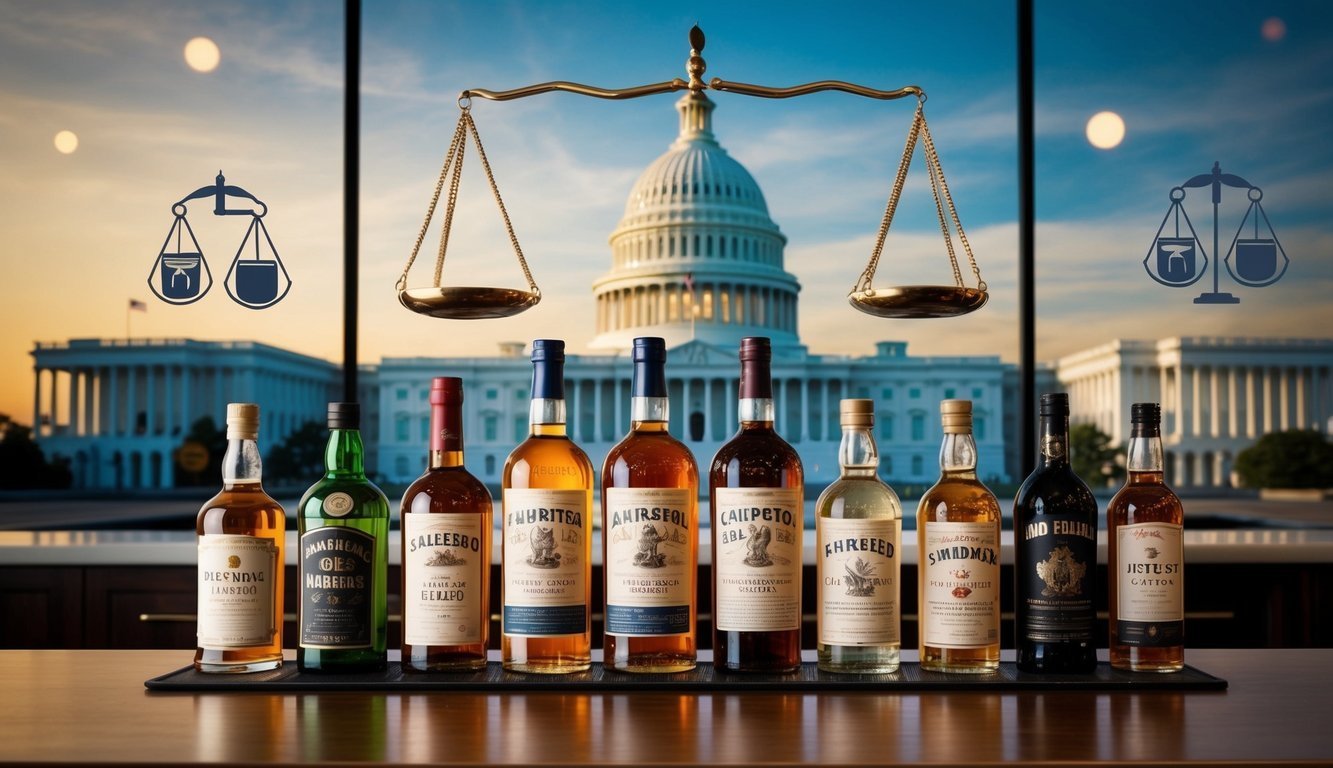As the United States braces for the implications of a new presidential term, the alcohol sector is beginning to assess how this shift might impact both manufacturers and consumers.
Interestingly, both Donald Trump and Joe Biden abstain from drinking alcohol, but their family ties to the industry vary.
Trump’s family manages a winery in Virginia, while Biden lacks any such involvement.
Tariffs and Trade Implications
From a Democratic standpoint, I have concerns about the broader implications of Trump’s policies on society and international relations.
Yet, the wine and spirits sector stands at a crossroads of apprehension and optimism as we witness this power transition.
One key issue at the forefront is tariffs.
During his first term, Trump implemented a hefty 25 percent tariff on select European wines and spirits, influenced by longstanding trade disputes, particularly over aircraft subsidies that date back to 2004.
Although these tensions predated his presidency, he amplified them considerably.
Now, as he gears up for a potential return to office, Trump has reaffirmed his commitment to tariffs.
His statements have suggested that he plans to extend tariffs on imports from countries like Canada, Mexico, and China, which could affect a broad range of products beyond just spirits like Tequila and Crown Royal.
The industry heavily relies on imports for materials like glass from China, making this a critical concern.
Moreover, the U.S. market for wines and spirits has enjoyed success in Canada.
However, that favorable landscape could potentially shift if Canada decides to impose retaliatory tariffs, causing uncertainty for American producers.
Impact of Immigration Policies
Another significant worry involves immigration policy.
Trump’s commitment to deporting all undocumented immigrants presents challenges that some consider daunting, given that approximately 16 million individuals fall into this category—roughly 5 percent of the nation’s population.
This increased focus on immigration enforcement poses a real threat to California’s vineyards.
The importance of timely grape harvesting is paramount, and the presence of Immigration and Customs Enforcement (ICE) during harvest could scare workers away, leading to devastating losses.
A recent raid in Bakersfield, California, during the citrus harvest season had already revealed the risks involved, as farm laborers were noticeably missing following that operation.
Imagine the potential repercussions for Napa Valley when Cabernet grapes reach the point of ideal ripeness.
A labor shortage could mean higher prices for not just fruits, but also vegetables, creating what some may refer to as a “Year Without Lettuce.”
Shifts in Regulatory Landscape
In terms of regulations, we are witnessing a shift regarding dietary guidelines as the administration changes.
The previous administration seemed indifferent to wine, indicating a possible new perspective under Trump.
The recent discussions about the dietary guidelines for 2025 hinted at the Biden administration promoting a committee dedicated to curbing underage drinking, which included researchers with ties to anti-alcohol organizations.
Additionally, Congress tasked the National Academies of Sciences, Engineering, and Medicine (NASEM) with reviewing the research surrounding alcohol-related health concerns.
Their findings, released in December, suggested that moderate alcohol consumption might lower the risk of heart attack and stroke, while also increasing the risk of certain cancers.
However, officials from the Biden administration overlooked this information, instead advocating for cancer warning labels on alcohol without addressing cardiovascular health.
As leadership changes, the alcohol industry could find solace in Biden stepping back from decision-making roles in this critical area.
Furthermore, Trump has hinted at possibly withdrawing the U.S. from the World Health Organization (WHO), which has often highlighted the adverse health effects of alcohol.
While this withdrawal may not be closely tied to alcohol concerns, industry players could see it as a positive development.
Trump’s tax cuts from 2017 were received positively by the alcohol sector, and the influential Wine & Spirits Wholesalers of America will likely continue to lobby for the maintenance of these tax benefits.
Perhaps the most substantial influence of Trump’s presidency on the wine and spirits market may not arise from direct alcohol-related policies.
Economic health generally leads to increased alcohol consumption, while downturns tend to curb spending—though the overall consumption rates might not see drastic declines.
Public sentiment toward Trump’s economic performance varies, but the state of the economy will undoubtedly play a crucial role in shaping the industry’s future.
Culturally, the U.S. continues to be led by individuals who abstain from drinking.
Historically, many prominent figures enjoyed alcohol, but under Trump, the approach may lean towards less regulation compared to Biden, fostering a more relaxed stance.
However, Trump’s critical remarks about regions like California and France might complicate public perception of wine markets.
Lastly, with Eric Trump overseeing Trump Winery in Virginia, there is potential for growth.
This winery produces quality wines outside the conventional territories of California and France.
As the wine industry in California grapples with looming immigration issues, the emerging wine scene in Virginia may find new opportunities to flourish in light of these changes.
Source: Wine-searcher.com

